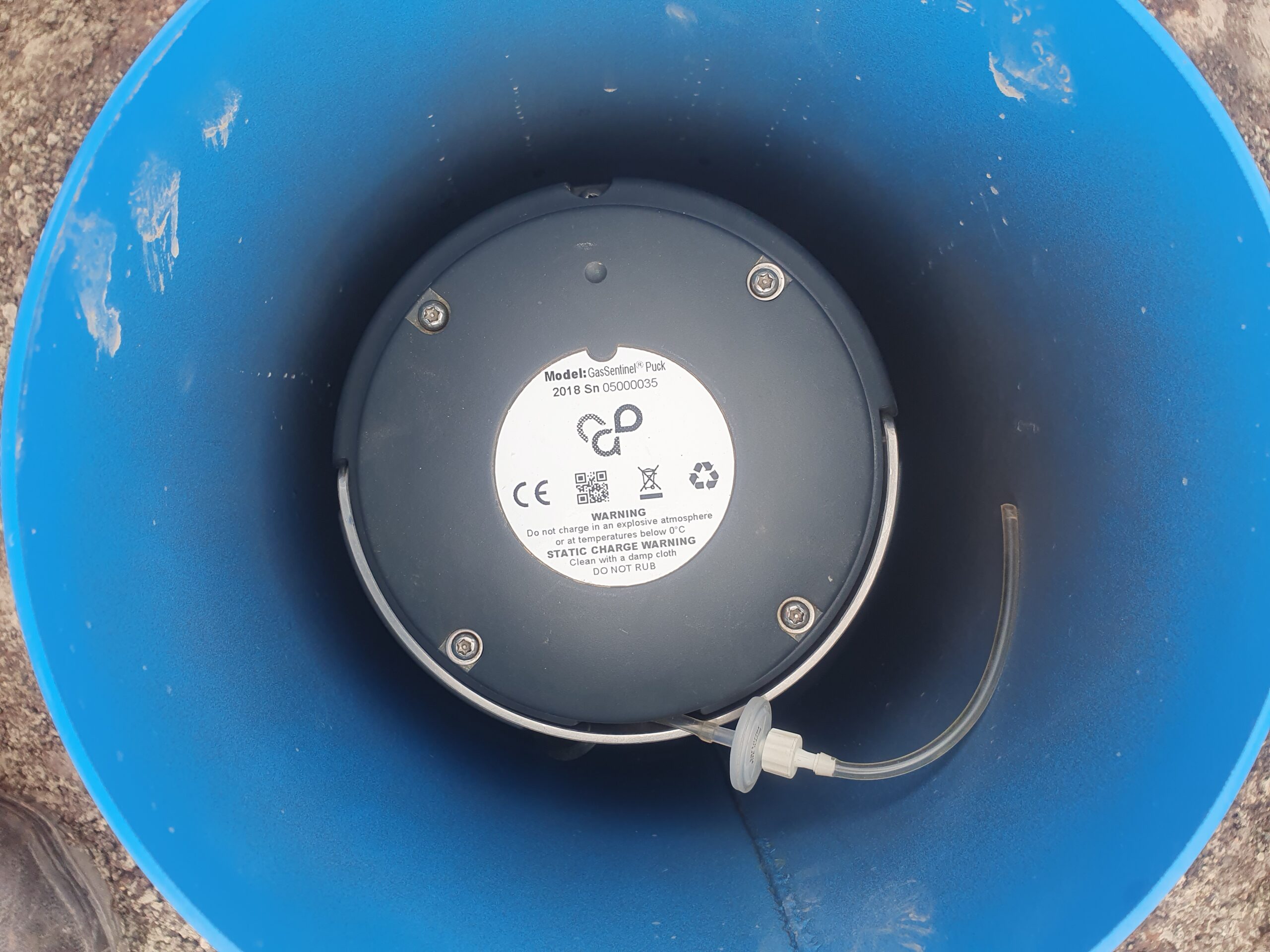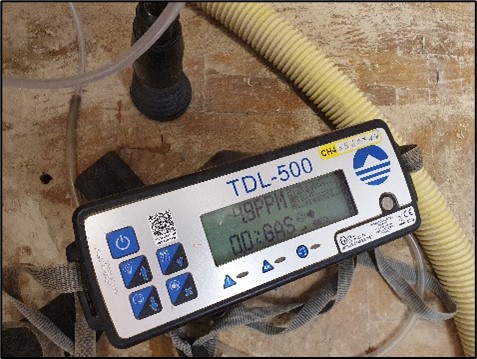- Vapour monitoring
- Internal gas sweep surveys
- Continuous ground gas monitoring
The house was a two-storey detached property built in the early 1900s with a basement and landscaped garden. The current owners wanted to sell the property, but an environmental search indicated part of the property was on the councils prioritised list as it was built on the site of a former petrol station. The house owners wanted to be removed from the list to expedite the sale.
A confirmatory ground investigation was carried out which included the installation of six boreholes. Elevated hydrocarbon contamination was identified in one borehole adjacent to the basement (BH1). A generic CLEA assessment indicated that a VOC vapour pollutant linkage may be present and further work was required.
The Scope
GGS was approached to produce a scope to carry out the next stage of vapour monitoring. The scope included a three-week passive and continuous monitoring programme, utilising the GGS AirSentinel, GasClam and laboratory sampling media. The AirSentinel was deployed within the basement of the property as a high frequency instrument sensitive to ppb TVOC. The GasClam was deployed in the external borehole where the hydrocarbons were identified and the laboratory media was deployed within boreholes, soil probes and internally in the property. Internal gas sweep surveys were also taken during all visits, using handheld instruments sensitive to ppmv for TVOC.
Vapour Risk Evaluation
Following the monitoring phase, GGS drew together all findings into a Human Health Vapour Risk Evaluation to provide the client with a clear assessment on the potential risk to human health within the property. The concentrations of speciated vapours were also compared against published air quality standards, calculated generic chronic risk criteria, published/collated acute risk thresholds/values and published odour thresholds.
It was clear from the GGS and historical data that BH1 was located within a residual VOC vapour source. BH4 also yielded low concentrations of two chlorinated solvents that would often be used in garages for degreasing. None of the other shallow soil probes or monitoring wells exhibited levels of soil vapour VOCs that could be attributed to volatile fuel related hydrocarbons in soil. The indoor ambient air vapour concentrations were all relatively low and were in the normal range for modern homes which have well documented VOC sources such as paints, cleaning products and furnishings etc.
Conclusion
GGS confirmed the presence of TVOC vapours in some borehole and soil probe locations. Internally the passive sampling, continuous internal monitoring and internal gas sweep surveys confirmed that the ambient air within the property were below the air quality indicators. This suggests that even though residual contamination is present adjacent to the property, this is not currently giving rise to unacceptable VOC vapour levels within the basement or ground floor rooms.
Through vapour monitoring, continuous ground gas monitoring, and internal gas sweep surveys, GGS enabled the client to:
- Have the house removed from the councils prioritised list
- Expedite the house sale
- Have confidence that VOC vapour levels within the property are at an acceptable level
Want to know more about GGS vapour intrusion services? Contact our expert team.




